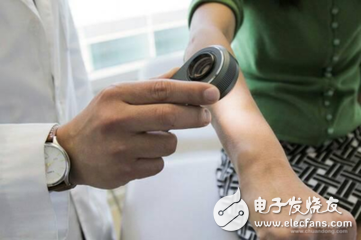In 2016, about 10,000 people died of melanoma in the United States alone. Rapid diagnosis of early disease is expected to reduce the mortality rate of the disease.
As many as 290 million Americans do not have health insurance. Providing medical services through smartphone apps will revolutionize medical services.
Using existing Google algorithms, Stanford University scientists created a database to train neural networks. An artificial intelligence algorithm originally used to identify cats and dogs can now diagnose cancer.

The team collected a large number of images from the Internet and worked closely with dermatologists and professors to collect 130,000 images of skin lesions covering more than 2,000 diseases.
Subsequently, they based the database to make algorithms that distinguish between fatal skin lesions and dry skin. The team claims that the algorithm is intended to "solve problems rather than program answers." This means that the more images in the library, the better the ability to identify lesions.
Stanford University uses artificial intelligence to diagnose skin cancer with an accuracy rate of 91%
To test the performance of the algorithm, the researchers compared the algorithm with 21 dermatologists through three diagnostic tasks: keratinocyte carcinoma, melanoma, and dermoscopic detection of melanoma. In three tests, the team found that the algorithm was accurate to 91%.
Report co-author Andre Esteva said: "We have created a powerful learning algorithm machine that can learn from the data. Instead of precisely programming what we need, you can let the algorithm solve the problem."
AI for medical useStanford's advanced AI may be in its early exploratory phase, but it is not the only AI that can be diagnosed accurately. Last year, doctors used IBM's AI system, Watson, to diagnose a leukemia, and the AI ​​system helped save the lives of a female patient.
This result is particularly shocking because the disease has not been diagnosed using traditional methods. IBM's research talks about symmetry, and the key to success is that AI can take advantage of large amounts of data and perform rapid analysis.
This is something that human doctors can't do (at least not with such precision and efficiency). The lady's genetic information was systematically examined and compared with 20 million clinical tumor cases. The system then concludes that the patient has an extremely rare leukemia.
However, accuracy is not the only advantage of the Stanford AI system, which is working on smartphones to help people with limited health care.
Esteve said: "When I realized that the phone would be ubiquitous, my important moment came. Everyone has a super computer with sensors and cameras in their pockets. If we use it to connect to the real screen, diagnose skin diseases or other What happens to small problems?"
Researchers are rushing to optimize algorithms and try to better understand how they make decisions. Soon, everyone can use this life-saving technology on their smartphones. In the future, if the technology is used for other diseases or uses, those who cannot afford insurance can also have good medical care. In the long run, it can save more lives.
KNLE1-63 Residual Current Circuit Breaker With Over Load Protection
KNLE1-63 TWO FUNCTION : MCB AND RCCB FUNCTIONS
leakage breaker is suitable for the leakage protection of the line of AC 50/60Hz, rated voltage single phase 240V, rated current up to 63A. When there is human electricity shock or if the leakage current of the line exceeds the prescribed value, it will automatically cut off the power within 0.1s to protect human safety and prevent the accident due to the current leakage.
leakage breaker can protect against overload and short-circuit. It can be used to protect the line from being overloaded and short-circuited as wellas infrequent changeover of the line in normal situation. It complies with standard of IEC/EN61009-1 and GB16917.1.
KNLE1-63 Residual Current Circuit Breaker,Residual Current Circuit Breaker with Over Load Protection 1p,Residual Current Circuit Breaker with Over Load Protection 2p
Wenzhou Korlen Electric Appliances Co., Ltd. , https://www.korlen-electric.com